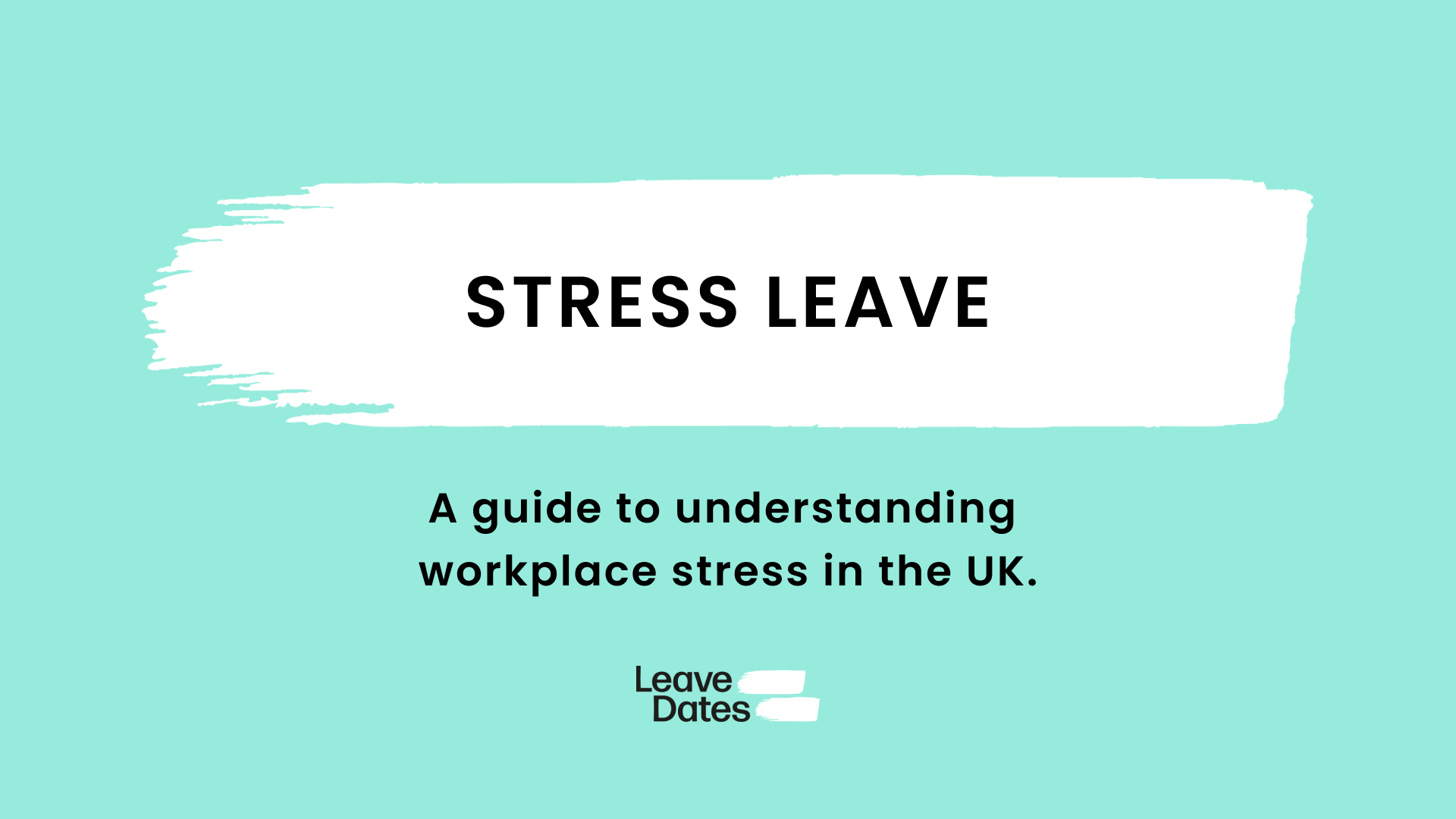
Stress is, sadly, a familiar concept to us all. Life just is stressful some of the time. For some people, it’s a lot of the time. And while it might be nice to think you have a work life and a personal life and ‘never the twain shall meet’, ultimately stress doesn’t clock off at the end of the day. Most likely, we’ll take work stress home with us, and home stress into work.
Unfortunately this is an issue that seems to be on the increase, with economic woes, climate concerns and geopolitical events all impacting people’s mental health. In the digital era, we are bombarded with stressors and it’s hard to switch off and slow down.
A recent report by Mental Health UK found that one in five working adults needed to take time off work in the last year because of stress-related mental health concerns, and over a third of adults felt ‘high’ or ‘extreme’ levels of pressure/stress ‘always’ or ‘often’. When you add it to the wider context that is seeing generally rising levels of people not working due to long-term sickness, having 20% of people needing to take stress leave at some point is very concerning. This is not the kind of leave you like to see a lot of on your calendar.
So what can employers do to support employees through stress leave, and to help tackle this epidemic of workplace stress?
Table of Contents
- Work-related stress
- Workload and time pressures
- Workplace culture
- Holiday allowances and presenteeism
- What is stress leave?
- What are people’s rights?
- Key takeaways
Work-related stress
While employers can do nothing about war, climate change or the economy (unless you happen to work in the Treasury!), they are in the ideal position to try and address the causes of work-related stress – of which there are many.
Workload and time pressures
A common cause of workplace stress is workload. Staff may be reluctant to speak up about struggling with workload, out of fear they will be seen as bad at their job or unable to cope. So it’s key that you create an environment of open communication and make it clear that workload management is a flexible and ongoing task. Tasks can be redistributed, deadlines moved and team members in a non-toxic, non-competitive workplace will usually be happy to help each other out.
Stress can also affect people’s time management skills, making workload feel more burdensome. Flexible working arrangements, such as remote work and a broad suite of leave options – and strong encouragement to use all allowances – will help people manage their time better.
Ultimately, nothing is more unproductive than a burnt out team member, and if workload is reaching unsustainable levels for prolonged periods then that’s a sign for management that staffing levels are off.
You need to know about workload issues before things get too much. A lot of this comes down to communication and culture, and reducing the stigma around talking about stress.
Workplace culture
As part of creating a mentally and physically healthy workplace culture, you should be on the lookout for signs that staff are suffering with stress. This will hopefully mean you can take early action to nip any issues in the bud and avoid things getting to the point they need to take stress leave. Burnout is not something you want to see. Some signs of a stressed employee might include:
- More frequent sick days
- Lower productivity
- Lack of enthusiasm or engagement
- They seem withdrawn, distracted or preoccupied
- Physical signs of stress – they appear tired, anxious, jumpy
- A change in personality
If you see signs of stress in your team, act fast. If you have an EAP, suggest they use it, and encourage mental health days.
Interestingly, it’s been found that women are more likely to be stressed than men. While all efforts to reduce stress should be applied equally to your whole workforce, it’s good to be aware of the disparity and keep an extra close eye on your female staff for signs of stress. It’s also a good prompt to ensure your leave policies and pay scales aren’t favouring men, as leave and pay are big causes of stress.
Also note that loving your job and getting on well with your team is not necessarily a cure for work-related stress. If you like your work too much, it can be hard to switch off and may be tempting to stick around too late. Even if your career is your passion, you still need to be able to leave it behind sometimes and too much overtime and not enough holiday is not going to make for a healthy work-life balance.
Holiday allowances and presenteeism
Whether it’s because you love your work, or you’re scared to take a break, failure to take holiday is a big contributor to stress. As an employer, you need to be pushing people to take leave and setting a good example yourself.
Flexible leave policies and generous allowances that allow people to spend time with their family, take time to relax and enjoy themselves away from work will go a long way towards helping people achieve a healthy work-life balance that keeps stress to a minimum.
But it’s not just about having those policies there, you need to make sure people know about them, and feel safe to use them. That means not worrying about needing to put in ‘face time’ or thinking the to-do list that will be waiting for them when they get back means it’s not worth taking time away.
What is stress leave?
Ultimately, even if you do everything right at work and cut out all work-related causes of stress (which let’s face it, is a bit pie in the sky and would give you sleepless nights yourself if you tried), there is still life outside of work. There’s nothing you can do about that, and people will still be taking sick leave for stress even if your office is a yoga studio in the mountains and you’re pumping CBD through the aircon.
Stress leave happens, so you need to have a policy.
Stress leave is a type of time off given to employees struggling with stress, where it is affecting their mental and/or physical wellbeing. It doesn’t have to be work-related stress; you can still take this leave for stress in your personal life.
Technically, stress leave is a kind of sick leave, with the key difference being that it is specifically intended to address mental health challenges. It’s less about physical recovery and avoiding spreading infections and viruses, and more about giving people time and space to mentally recuperate. It’s also not like annual leave – while it’s about taking time to rest, it’s not rest for rest’s sake (though itself a very valid reason for time off!), or to generally relax, but to prevent the serious impact that prolonged stress can have on a person.
As more businesses and employers recognise the importance of mental health, stress leave is becoming a key part of employee wellness initiatives. You might have a specific work-related stress policy that you use to tackle this issue. This could involve early intervention and support, followed by stress leave if needed and then a return-to-work interview and perhaps a phased return to work plan.
What are people’s rights?
In the UK, there are several key laws that cover stress leave. Both the Employment Rights Act 1999 and the Health and Safety at Work Act 1974 require that employers take measures to protect staff from work-related stress and offer a safe working environment. This means that, separate from the leave itself, if stress is linked to workload or working conditions, employers are legally obliged to address those issues.
Under the Equality Act 2010, if stress is linked to a diagnosed mental health condition that qualifies as a disability, employers must make reasonable adjustments. Employees with stress-related mental health issues are also protected from discrimination under the Act, and so must be able to take the time they need to recover. In this sense, they are legally entitled to stress leave, whether it is given that name or not.
In terms of pay, staff on stress leave have the same entitlements to Statutory Sick Pay (SSP) as they would for a physical illness. This means meeting the minimum earnings threshold and being off work for four days in a row. But this is the legal minimum. As ever, we are big advocates for employers going above and beyond where you can, and it would be worth thinking about the impact of putting already stressed employees under financial pressure while they’re trying to recuperate. You also wouldn’t want there to be a disincentive to take stress leave if it’s needed.
Key takeaways
Stress is an unavoidable part of life and doesn’t look to be going anywhere, but employers can play a big role in reducing its impact on their staff. Through supportive policies such as stress leave, a healthy workplace culture that prioritises open communication and where there is no stigma around mental health, and addressing specific work-related stressors like workload and presenteeism, you can help your team deal with stress and hopefully avoid the need for stress leave at all. But where it’s needed, it should be there – a clear policy will ensure people are treated fairly and can take the time they need to recover.
Ultimately, stress leave is an investment in employee wellbeing that will pay off in terms of a happier, healthier and more productive workforce.




